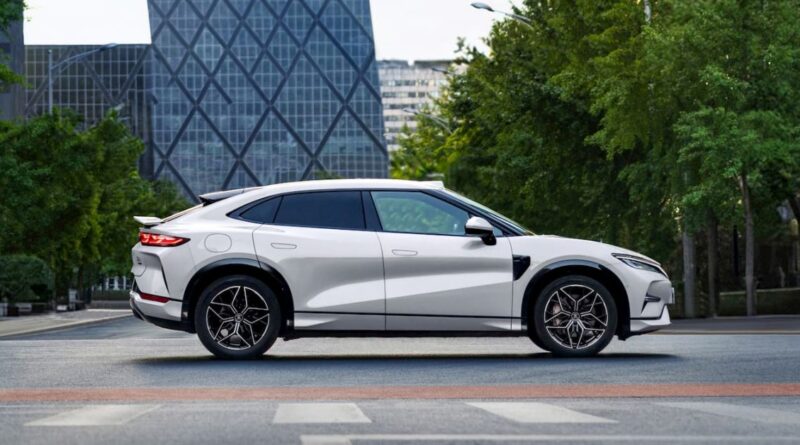This country quietly has become an electric refuge with EV, now have 76% market shares

While most subtitles focus on the adoption of EV in the US, Europe and China, Nepal quietly overcomes almost every country on Earth in terms of electrification of its roads.
Only last year was 76% of new passenger vehicles and 50% of the light commercial vehicle sold in Nepal electric Compared to 20% of the global Avering.
How did we all miss Nepal’s electrification story?
Tl; Dr: The New York Times was He has published a fascinating new message that tells the little -known story of Nepal’s electrification. The aggressive shift in the country is the result of a perfect storm: exploded hydropower, intelligent tax policy, growing infrastructure and a wave of available EV from China.
Cars driven by rivers, not oil
Power Grid Nepal is powered by rivers flowing from the Himalayas, which makes electricity clean and locally the source. In 2015, the fuel crisis with India calls on national beer energy and helps to end the outage that has been troubled by the Earth for years. Now electricity is abundant – and makes more sense to use it for transport than to maintain oil imports.
There are many countries in somewhat similar situations, but most of them did not accept electric transport as Nepal.
To accelerate the transition, the government reduced import taxes for EV to just 40% (vs. 180% for ICE vehicles). Result? Hyundai electric SUV now costs less than its gas counterpart.
Infrastructure charging is also growing fast: 62 public stations installed by the government, with HUDREDS more businesses and homes. At current electricity rates, the cost of EV costs about 15 times less than replenishing the gas car.
China dominates EV Surge as a beer dealer
Chinese car manufacturers as a Byd are quickly taking over the market. Yamuna showstha, an original distributor of solar facilities, has become an exclusive dealer of Byd Nepal and now operates 18 retailers. He expects to sell 4,000 vehicles in 2025.
“Consumers get Tesla-Tier vehicles for half the price,” said one local Suzuki dealer, remarking that Indian brands could not keep up with costs or functions. Dozens of Chinese brands are now competing on Nepal on the EV market and the transition is pushing faster.
The electric transition has created many opportunities in the relatively small automotive industry of the country.
Ev works for everyday drivers in Nepal
EV is already paying for everyday Nepalese. Jit Bahadur Shahi, withdrew the policeman, bought an electric minibus for approximately $ 33,000. Only 10 round trips per month between Kathmandu and his hometown covers loan payments. He expects to own it directly in the oven.
Yet there are challenges: Infrastructure charging is not everywhere, but the government invests in expansion to ensure that the infrastructure grows with a rapidly growing trip.
Political instability could slow things down.
While the story of success, especially for the developing country, could be considered difficult to achieve almost 100% EV sales in Norway in the middle of some political instability.
Despite dynamics, political progress could be derailed. Nepal has three prime ministers in five years. This year the tariffs are crawling. Meanwhile, there is no national plan for recycling batteries or safety standards of the vehicle.
“If the incentives disappeared, the market could move back to the gas,” warned Rajan Babu Stringha, distributor of Nepal Tata Motors.
Public transport is another step
While private adoption EV is growing, most of the Nepal population concerned buses and motorcycles that remain mostly fossil fuel.
The State Buses operator Sajha Yatayat operates 41 electric buses and is planned to expand. China has recently offered donating another 100 and helps build a clean transit spine. But say experts That at least 800 electric buses are needed Actually shift mobility in KatHanda Valley.
Scooters and the two-eelers must also go electrically, but adoption lags behind the neighboring India.
“We are trying to reduce fossil fuel vehicles in my city,” said the mayor of Lalitpur Chiri Babu Maharjan in the story of Nyt. “This is very difficult, but we have to do something.”
Electrek’s take
The story of EV Nepal is unique, but there are also many similarities to other markets, which is potential replicable. By joining clean energy, the country has accepted the Chinese EV and created the right incentives, the EV adoption has most of the markets.
Again, I do not exceed me that this is a relatively small market, but it is still impressive that several Chinese cars can change the country’s automatic market in less than 5 years.
From any EV to almost only EV in about 5 years.
FTC: We use Insure to earn automatic affiliate links. More.

